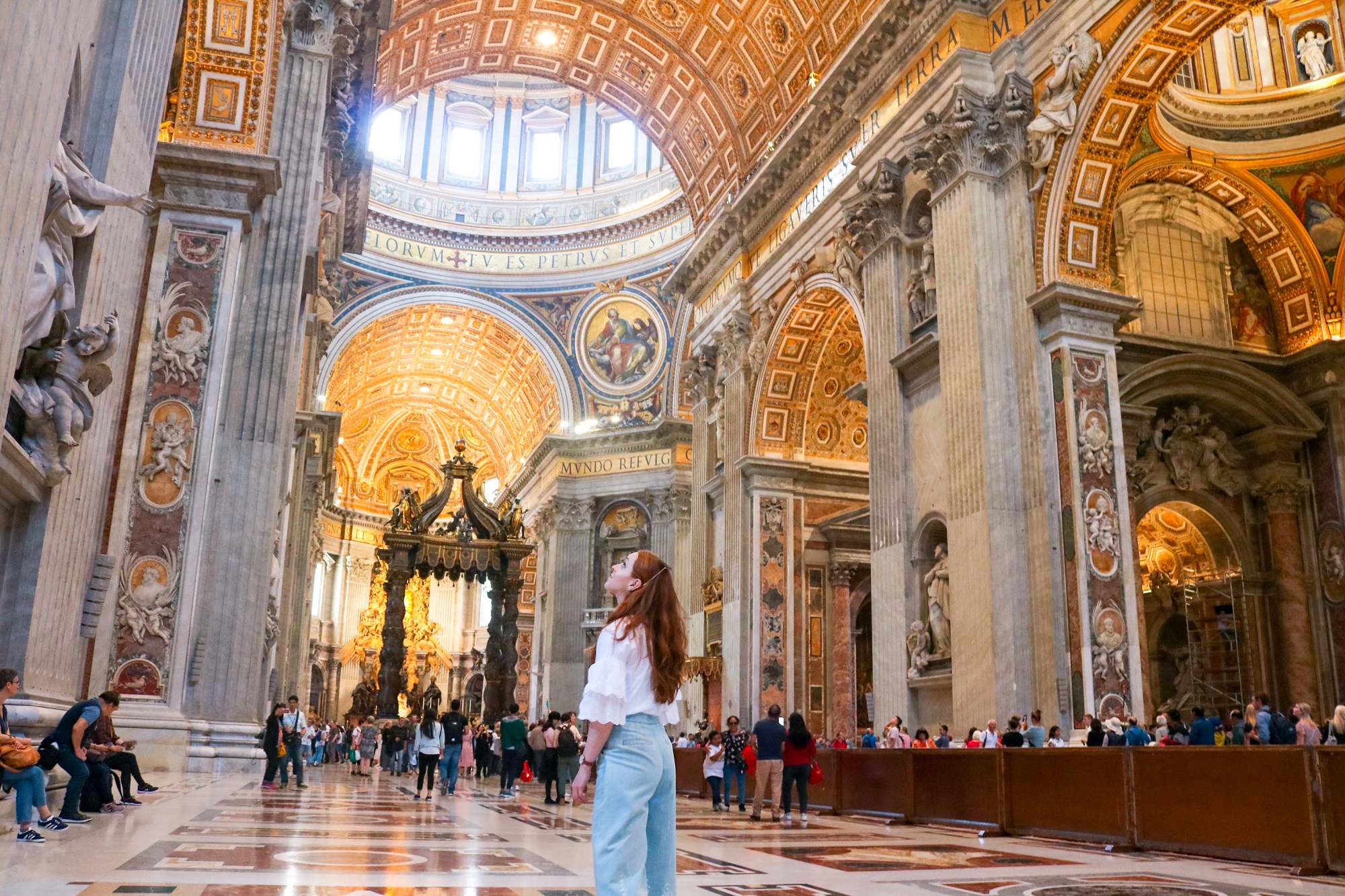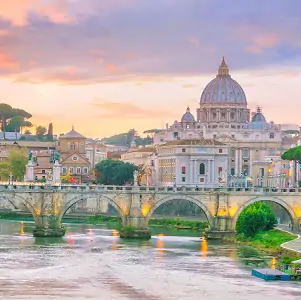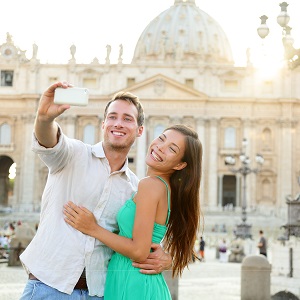To help plan your tour of the Vatican City, we’ve created a list of the finest masterpieces you would be a fool to miss on your visit. Prepare yourself for some of the finest pieces of art the world has seen.
Vatican City is the world’s smallest sovereign state and the global heart of the Catholic faith. The state has fascinated travel enthusiasts with its breathtaking edifices, historic monuments, incredible artworks and the most revered magnum opuses. The city’s holy buildings are not just monumental in scale but they are also crammed with some of the world’s most glorious artworks. Here we’ve master-crafted a list of jaw-dropping chef-d’oeuvre that you ought to appreciate in the Vatican:
-
The Sistine Chapel
Restored by Pope Sixtus IV in the late 15th century, the Sistine Chapel has served as a place for religious and functionary papal activity, as well as a canvas for the much-celebrated Renaissance artists like Michelangelo, Botticello, Rosselli and Luca. Now considered one of the most awe-inspiring masterpieces of the world the Sistine Chapel is adorned with phenomenally frescoed walls and ceilings, with the prime highlights being ‘The Creation of Adam’ and ‘The Final Judgement’. The latter was painted 20 years after finishing the frescoes on the ceiling, also known as the fresco vault. Despite his artistic brilliancy, Michelangelo was reluctant at first to accept the project commissioned to him by Pope Julius II, considering himself a sculptor rather than a painter. Eventually however, he joined other Renaissance artists and began working away on the Sistine Chapel ceiling from 1508 – 1512. Four years of work and the magnificence of the ceiling is still admired today. The ceiling is covered in the brush works of Michelangelo, portraying 9 scenes from the Book of Genesis, with one of the most iconic being his ‘Creation of Adam’.
-
Raphael’s ‘Transfiguration’
Displayed in the Pinacoteca Vaticana, Raphael’s ‘Transfiguration’ is one of the most applauded paintings of the Renaissance movement. Commissioned by Cardinal Giulio di Giuliano de’Medici, Raphael worked on this divine painting from 1516 until his death in 1520. The painting illustrates one of Jesus’s miracles in the bible – his transfiguration into radiant light on a mountain. Raphael adds his own twist to the story by joining it with another episode from the Gospel of Matthew where Jesus cures a boy of epilepsy. It depicts the dual human and divine nature of Christ shown by Raphael’s use of light and dark. The lightness of Jesus’s body in heaven at the top of the painting is contrasted to the earthly human darkness at the bottom. This, as well as the human emotions carefully displayed, have made this painting truly significant in the history and appreciation of art.
-
Leonardo’s ‘St Jerome in the Wilderness’
One of the many unfinished paintings of Leonardo da Vinci, St. Jerome in the Wilderness skilfully portrays St. Jerome on one knee with his eyes beseeching towards a faint drawing of a crucifix. There’s also a lion figure lying at the saint’s feet creating an S-movement within the frame. While this fine artwork exudes pain and grotesqueness, defying the idea of beauty, it is quite mesmerising in its representation of human suffering. Dated back to 1480, Leonardo’s sketch is unique in that it manages to capture the viewer’s attention without resorting to colour elaboration. Despite not being completed, ‘St Jerome in the wilderness’ can still be appreciated for its careful measurements, which see St Jerome depicted in a trapezoid form which contrast with the sinuous form of the lion that lies at Jerome’s feet.
-
‘Laocoön and His Sons’
One of the most famous ancient sculptures ever discovered the marble sculpture of ‘Laocoön and His Sons’ counts as a fine example of Greek art that’s renowned for the evocative portrayal of physical struggle. Excavated in 1506 and dating back to around 30-40 BC, this iconic sculpture illustrates a Trojan priest and his sons being devoured by two sea-serpents. With the vivid agonised contraction of the abdomen and every muscle of the body, the audience can almost feel the pain themselves. Displayed in an open courtyard in the Vatican Museums, this piece of art is definitely worth the slight detour.
-
Caravaggio’s ‘The Entombment of Christ’
Considered one of the most appreciated painters in all Italian art, Caravaggio’s personality and technique can be demonstrated in his ‘Entombment of Christ’. This revolutionary bit of art brilliantly displays the man’s progression from life to death via several characters. The intricate details illustrate the painter’s giant effort to present naturalism with the use of chiaroscuro, the art of using strong contrasts between light and dark to achieve a sense of volume in modelling 3D objects and figures. It is one of the best and most tragic representations of this scene from the Bible, with a light that highlights the shadows that fall around the characters, whilst illuminating them to the viewer so that they can be gazed at in detail.
Explore Our Vatican Tours
-
Rome Day Tour with Vatican & Colosseum
9 Hours
€95
See More -
Afternoon Private Vatican Tour
3 Hours
€90
See More -
Extended Vatican Museums & Gardens Tour
5 Hours
€99
See More -
Vatican & Sistine Chapel Night Tour
2 Hours
€59
See More





